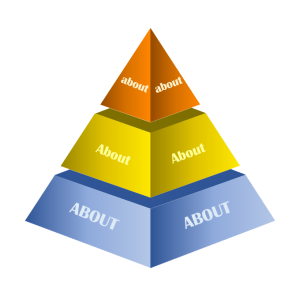By Eduardo Suastegui of http://www.eduardosuastegui.com
What is this story about? To write it, you have to know the answer to that question. It’s a simple question—deceptively so. But yeah, if you’re going to have any idea of what to write next, and if you’re going to write a semi-coherent story summary blurb, you have to know what the story is about. But do we know what this entails?
But yeah, if you’re going to have any idea of what to write next, and if you’re going to write a semi-coherent story summary blurb, you have to know what the story is about. But do we know what this entails?
As we try to discern what “about” entails, think about it like the three L’s in real estate. If there we go for location, location, location, when it comes to story-telling, I suggest we think in terms of about, About, and ABOUT.
ABOUT ACTION AND EVENTS
The simplest way to answer the question and the most straightforward? Make it about what’s happening. Often book blurbs and synopses use that approach. Why? Because it’s, well, the most approachable. Saying what’s going on from one moment to the next, or what will happen in the story in broad strokes (in the case of a summary) gets the job done in a way most people grasp.
There is nothing wrong with this. In a way, it’s natural. In a story things happen. But is that all the story is about?
ABOUT CHARACTER DRIVE AND MOTIVATIONS
For me what happens in the story must come with a strong character-driven engine. Sure, things will happen which are beyond the control of my characters. Even so, what they do next in response to those beyond-their-control circumstances forms a strong core of how the story unfolds. How my characters respond and the actions they take must make sense in terms of what they want to achieve, what makes them tick inside as a person, weaknesses and strengths. This for me is the About in the story, and it undergirds the about that we see in the action and events.
Is this all there is? Is this all the story is About? If we said yes, we probably would have a good enough story. For me, though, when I’ve written (or read) stories that stop here, they’ve felt incomplete and perhaps even a tad superficial.
ABOUT IDEAS AND CONCEPT
Without getting boring and didactic, the best stories I’ve enjoyed reading hold together with an overarching concept or idea that sits a layer or two below the surface. Sometimes it comes up for air. Sometimes it lurks. At all times it provides the foundation to what happens with the characters and the events they deal with.
As an example, let’s take Jurassic Park. For the about, it comes rushing at you with roaring dinosaurs and people running from them. Those people aren’t cardboard. They have personalities, world views, and agendas that drive the way they behave from one moment to the next, providing the story’s About. Yet, a deeper undercurrent drives the narrative. The concept that one could bring back extinct species through genetic manipulation and cloning ushers in the philosophical question of whether one should do such a thing. This, alongside the idea that no matter how we engineer it, life “finds a way” in unpredictable and dangerous ways, with chaos theory thrown in for good measure is what Jurassic Park is ABOUT. Take that out or diminish it, and you’re left with Jurassic Park’s two sequels. Lot’s of screaming and roaring and running, but the strong ABOUT has exited stage left—or right—and the story rings hollow.
Why do I go on about all this? Because for me, as a writer, the about, About, and ABOUT of the story must work in concert. If they do not, or if they get out of balance or if I mishandle them, the story turns flat and/or hollow.
That word, balance brings us to one cautionary point. As I write my stories, I don’t want the ABOUT element to get off balance. I don’t need to get preachy or didactic about it. I don’t need to go on for paragraph after paragraph of boring narrative to make the point. It should emerge and integrate with the rest of the story without becoming overbearing or super heavy. Keeping the balance and harmony among these three abouts is what I aim to do as I tell my stories.
